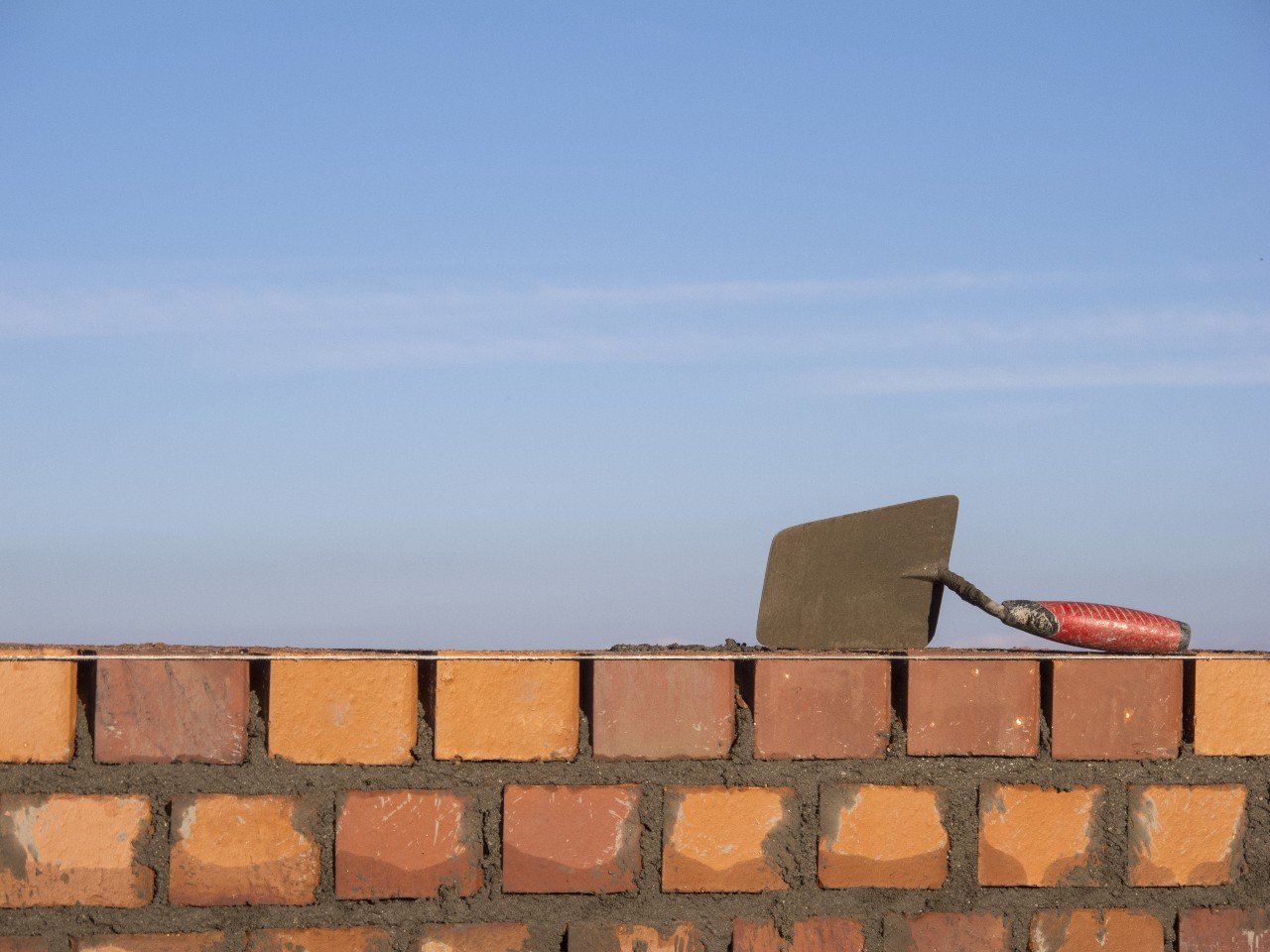Bulging Brick Wall
Bulging or bowing bricks occur when portions of a brick wall begin to cave in or protrude. This can occur in a variety of brick structures, like foundation walls, external walls, or chimneys. Typically, this is caused by excess moisture behind the brick. As a moist environment is among the worst perpetrators of damage to brick structures’ stability, and water damage is among the costliest things to repair, it’s essential to take action and fix the issue immediately. To fix the issue, a mason will remove the bulging bricks to assess the full extent of the moisture intrusion behind them. If the damage is limited or if the cause of moisture requires only a small fix, they can take the appropriate steps to ensure there’s no further damage. If the cause is a symptom of a larger plumbing or water-related issue, they’ll likely partner with a plumber to resolve the issue. Once the source of the water is found and plugged, the mason will replace any bricks damaged by the moisture and rebuild the outer portion of the wall. A skilled mason will also work to ensure any new mortar or bricks match the structure’s non-damaged portions.Compacted Bricks
Compacted bricks are similar to bulging bricks in that they can warp the exterior wall of a brick structure. Compacted bricks, though, aren’t merely displaced bricks but ones that have lost their shape. This can have a cascading effect, as a structure can no longer rely on the compacted brick for its integrity. This puts more weight on surrounding bricks and leads them to compact, too. Additionally, compacted bricks also give access for water or pests to make their way through the wall. If either begins to build up in any significant way, this can lead to structural integrity issues. Again, it’s important to fix these issues as soon as possible to prevent further damage. When your mason arrives, they will replace any compacted bricks. If this is a recurring issue, they may also recommend that additional support for your foundation by underpinning it with push piers.Mortar Damage and Deterioration
Bricks rely on mortar for stability. As mortar gets damaged or begins to deteriorate, it can lead to bricks rubbing against each other. This leads to the brick losing its shape or becoming loose. Not only will this damage the structure, but it could also cause personal injury if a brick were to fall off the wall and hit someone. Any mortar repair or replacement must be conducted by a skilled professional. They are best equipped with the tools and experience to assess the damage and come up with a durable and reliable solution. A skilled mason will also ensure that the mortar matches the mortar of the surrounding bricks, so the repairs don’t look like patchwork.Shelf Angle Spalling
Shelf angles are common in masonry construction. They are an L-shaped piece of metal, often steel, that helps support the weight of the brick by transferring some of the weight onto the house or main structure. This provides needed structural support should there be any shifting or movement of the building. Shelf angle spalling occurs when the bricks it supports begin to chip away. This can be an indication that the shelf angle itself is corroding. If this were to go on for long enough, the weight of the brick could become too much and damage either the structure’s walls or its foundation.Staining
Brick staining is relatively common. Often referred to as efflorescence, brick staining occurs when salts in the ground are drawn up through the concrete then expelled through the outer pores. After the soluble salts are pushed out through the concrete’s exterior, it leaves a white stain on the structure. Unlike other issues listed here, efflorescence isn’t an indicator of some larger issue. Low temperatures and the presence of moisture through condensation, dew, or precipitation can all cause efflorescence. Still, it’s important to clean the concrete quickly once you notice the stains. A simple pressure wash can get rid of the stains and prevent the stains from turning into calcium carbonate. Once that transformation happens, you’ll need the help of a mason to treat the concrete with special chemicals to remove the stains.Vertical Corner Cracks
A vertical corner crack is another issue that isn’t necessarily a sign of a more significant issue but should still be repaired quickly. Brick cracks can be common, as bricks can swell and retract as the temperature changes. The only time you should be concerned about a brick crack harming the structure’s integrity is if the crack is greater than 30 degrees off the vertical axis. However, even if you don’t need to be worried about structural integrity issues, you should have a mason promptly fix the issue. If left unrepaired, moisture can make its way behind the brick facade and cause bulging or damage to the interior wall. Luckily, the treatment methods for this issue are fairly inexpensive. So, it makes sense to take care of this quick, inexpensive repair right away before the damage turns into something much costlier.The Brick Experts Are the Masonry Repair Experts
The Brick Experts can help with any of your masonry repairs in the Dallas area. We employ a crew of highly skilled, professional craftsmen who can assess the damage and determine your needs and budget’s best repair method. We’re also experts at matching mortar to help ensure our work matches the existing, non-damaged structure. Call us today at 817-901-0236 to see how we can help.Featured Image: Ramon L. Farinos / Shutterstock










